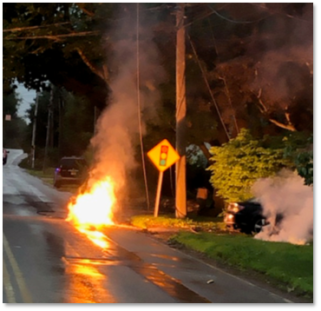 Electric Shock Drowning (ESD) — Never Heard of It? Me Neither, Until Now
Electric Shock Drowning (ESD) — Never Heard of It? Me Neither, Until Now
Several times during the summer, I would read a story of a fatality at a lake or pool or marina where somehow electricity was in the water that caused people to drown. One I recall was when the owner noticed his Golden Retriever was having problems after jumping off the dock into the lake, and the owner jumped in to help the dog. As soon as the owner went in, he began having problems and ultimately drowned, but the dog did survive. There was a short in the power cable to the dock. What was happening that was causing people to drown? Were they being electrocuted?
Here’s what I learned, it’s an event called Electrical Shock Drowning or ESD. When there is electricity in the water, it will cause your muscles to cramp up and you are unable to move your arms or legs, meaning you will be conscious, but will drown because you will not be able to swim or grab anything or even yell for help. What a horrible way to die!
https://www.electricshockdrowning.org/
The ELECTRIC SHOCK DROWNING PREVENTION ASSOCIATION has several educational videos and information on how to protect yourself and your family if you boat or go around a marina. I learned things I was completely unaware of until I looked at their web site. Even if you don’t have boat, spend a few minutes learning about ESD—it could save your life and the lives of people you love!
Underground Cables
Just like the overhead Distribution system, when the cables go underground, you still have Primary (4800v to 23Kv) and Secondary voltages (120/240/480V) to deal with, but instead of being 40 feet in the air, the cables are 12-24 inches under your feet. So how do we protect ourselves if we need to dig with mechanical tools or even dig by hand?
 First, you need to know that Call Before You Dig (CBYD) is your best friend!! (or as I call refer to it, Call Before You Die). So, CBYD comes out and marks all the underground services. What do all the colors mean?
First, you need to know that Call Before You Dig (CBYD) is your best friend!! (or as I call refer to it, Call Before You Die). So, CBYD comes out and marks all the underground services. What do all the colors mean?
There is lots of equipment and many dangers running below the surface at varying depths, with electricity supposedly around 24” deep (unless going under concrete 2” thick or more, then the cables can be 18” below grade). There have been terrible accidents when someone using a jack hammer or cut saw has gone too deep and hit underground power. Slow and careful is the best way.
Underground electric cables are a different construction than the overhead wires. They are designed to be used in places where the ground and people will be closer but not be at risk just by being close, like the cables coming down a pole mounted riser inside the PVC pipe.
Overhead Primary cable called Tree wire (no insulation)
Underground Primary – notice the Red Stripe – Red on the CYBD mark-out (insulation)
It is very important that you recognize this type of cable as you dig, which should be by hand digging if you are within 18’ – 24” of the mark-out center. Once you have uncovered this, you should be careful to not damage the cable. If you inadvertently nick the cable, stop work and contact your utility to inspect it. Don’t be handling the cable, but you can work around it safely. OSHA expects that anyone performing excavation and digging be familiar with the underground hazards and recognize what they are and how to work safely. Each electric utility may have different rules and methods on how they want you to work around underground cables, which could be in PVC pipe or direct buried. I suggest you contact your utility and ask for a representative to come by your next safety meeting and talk about how they expect you to work with underground cables.
Here’s a recent storm story: Down wires that were burning reached the new plastic gas main and melted it, causing a gas fire in addition to the electrical hazard! Notice the hanging wires and burning grass to the right side and the location of the month-old gas main!
This is a perfect example of electrical step potential. Just walking around this area could kill or injure you. Stay at least one pole section away on the side of the street opposite the wires, do not be under the wires!
Remember, if you get caught in a vehicle and it’s contacting wires, stay in the vehicle and call for help!





